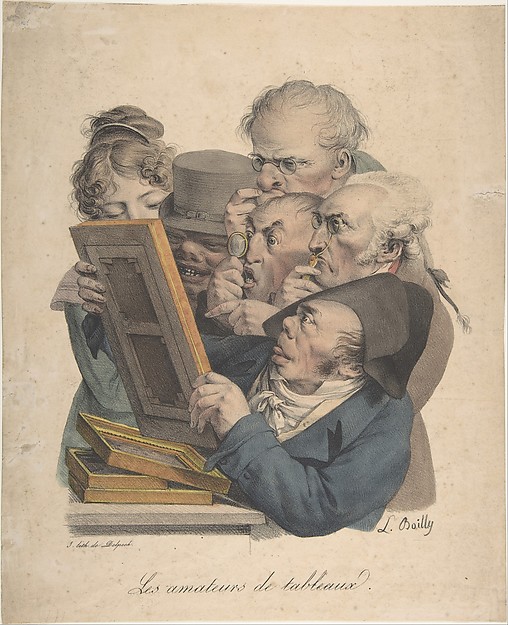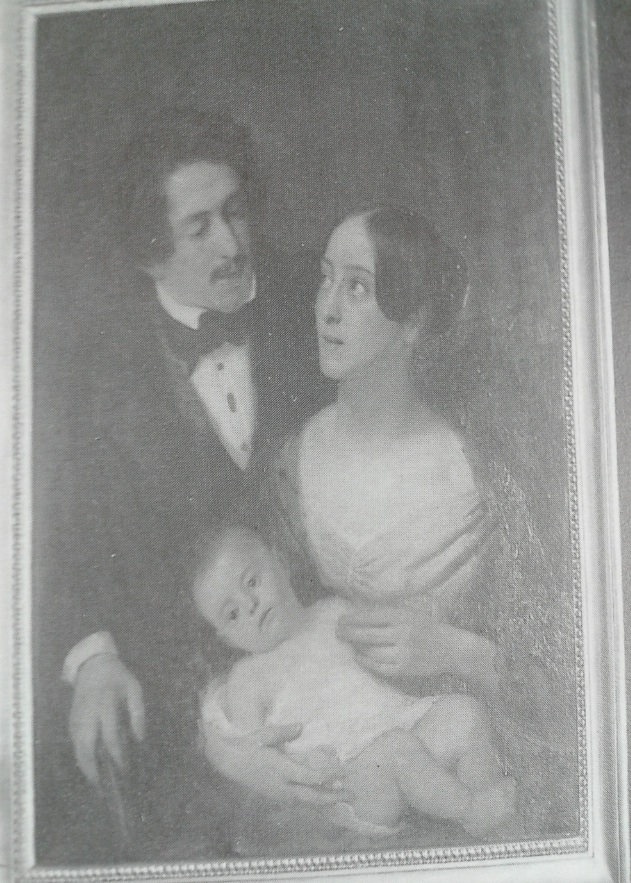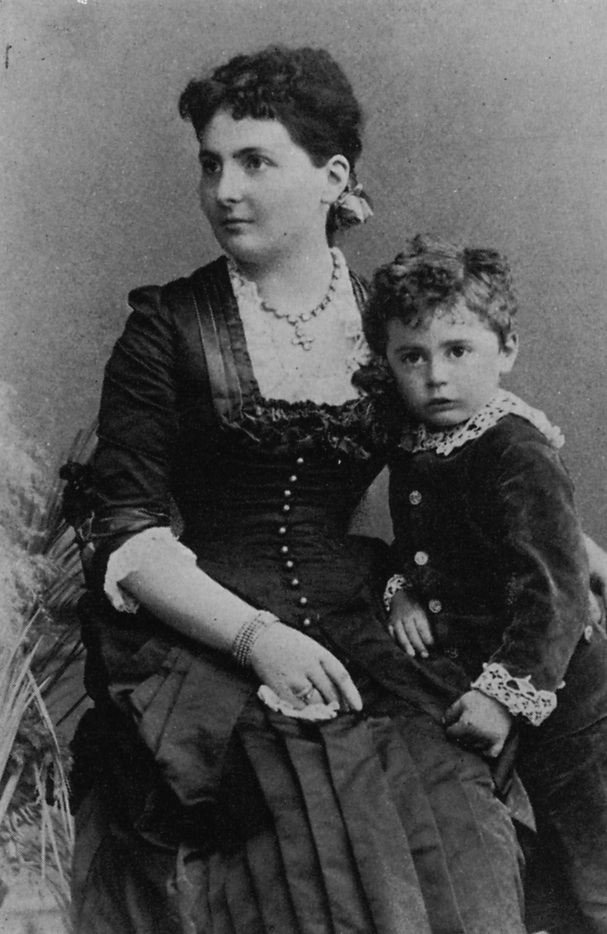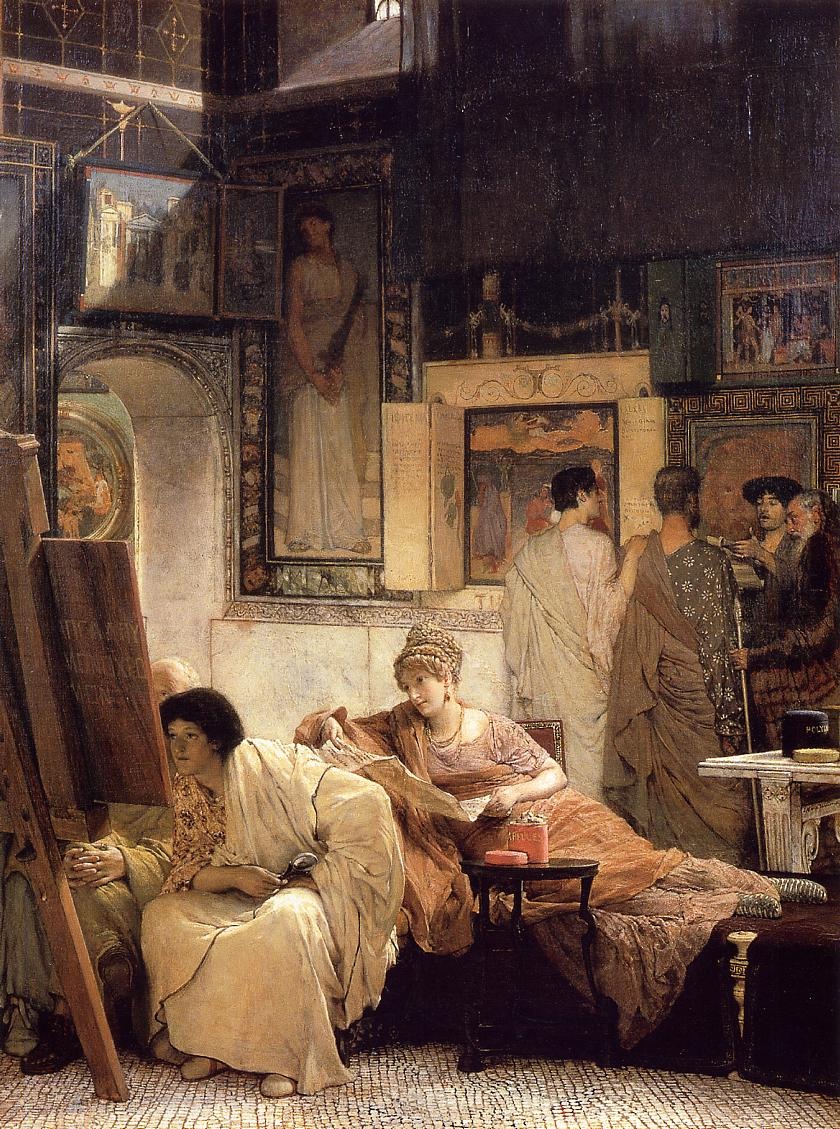M
I
C
R
O
S
T
O
R
Y
O
F
A
R
T
........................................................

NOW COMPLETED:

........................................................
MICROSTORY OF ART
ONLINE JOURNAL FOR ART, CONNOISSEURSHIP
AND CULTURAL JOURNALISM
........................................................
INDEX | PINBOARD | MICROSTORIES |
FEATURES | SPECIAL EDITIONS |
HISTORY AND THEORY OF ATTRIBUTION |
ETHNOGRAPHY OF CONNOISSEURSHIP |
SEARCH

........................................................



 >MICROSTORIES
>MICROSTORIES
- Richard Serra
- Martin Scorsese
- Claude Simon
- Sunshine
- Werner Herzog
- The Creation
- Marcel Duchamp
- Nino Rota
- Wölfflin and Woolf
- Hansjörg Schneider
- Kraftort Arkadien
- Visual Biography
- Schlaraffenleben
- Die Geisteswissenschaften
- The Voyeur
- Buzzword Sustainability
- Paul Verlaine
- Tao Yuanming
- New Beginning
- Seneca
- Still Lifes
- Charles Baudelaire
- Frédéric Chopin
- The Art History of Sustainability
- Wang Wei
- Solarpunk
- Historians of Light
- Lepanto
- Renaturalization
- Plates
- Snow in Provence
- Learning to See
- Picasso Dictionaries
- Peach Blossom Spring
- Picasso Tourism
- Tipping Points
- Sviatoslav Richter
- Weather Reports
- Treasure Hunt
- Another Snowscape in Picasso
- Picasso in 2023
- Dragon Veins
- The Gloomy Day
- The Art of the Pentimento
- Reforestation
- The Status of Painting
- Emergency Supply
- Punctuality
- Watching Traffic
- Zhong Kui
- How Painting Survived the 1990s
- Confirmation Bias
- Sustainability and Luxury
- Garage Bands
- Picasso and Artificial Intelligence
- Eyes of Tomorrow
- Picasso in 2023 2
- Gluing Oneself to Something
- Suburbia
- Bamboo
- Sustainability and Carpe Diem 1
- Interviews with Bruegel
- Sustainability and Carpe Diem 2
- Coffee & Sugar
- Bamboo 2
- Picasso in 2023 3
- Sustainability and Carpe Diem 3
- Cherry Orchard
- Old Magazines
- Chance
- Nick Drake
- Harlequin
- The Smartphone & the Art Book
- Atlas Syndrome
- The Kitchen
- Atlas Syndrome 2
- Consideration
- Tori Amos
- School
- Orchard Auctioning Day
- The Hundred Years’ War
- Sócrates
- Chameleon
- Nefertiti Bust
- Picasso as a Computer
- Sunflowers
- Philemon & Baucis
- Ode to the Radio
- Childhood
- Wimmelbild
- Restitution
- Nick Drake 2
- Wishful Thinking
- Sundays
- The Independent Scholar
- September
- The Fisherman by Pirosmani
- Microadventure
- Sociology
- Salvator Mundi
- Chillon
- Appassionata
- Amber
- Homer
- Berlin
- Planet Walk
- Improvisation
- Seeing Picasso
- These Nice Kids
- Robber
- The One
- The Sea Turtle
- Zoo
- Through the Hush
- Wunderkammer
- I Do Not Seek, I Find
- Shopping Mall
- Food Hamper
- The Secretary
- This Gate
- Nor Rainy Day
- House on a Hill
- Beautiful Island
- Second-hand Bookstore
- Flat
- Slap in the Face
- Serra, Wenkenpark
- Apologies
- The Bells
- Nordmann Fir
- Picasso Wanting To Be Poor
- Picasso, Pirosmani
- A Brief History of Sculpture
- 24 Sunsets
- Rusty Phoenix
- Glove
- Wintry Stanza
- A Song
- Like A Beatle
- Catching An Orange
- Solar Bees
- Permaculture

 >FEATURES
>FEATURES
- Van Gogh On Connoisseurship
- Two Museum’s Men
- Ende Pintrix and the City in Flames
- Titian, Leonardo and the Blue Hour
- The Man with the Golden Helmet: a documentation
- Un Jury d’admission à l’expertise
- Learning to See in Hitler’s Munich
- Leonardo da Vinci and Switzerland
- The Blue Hour Continued
- The Blue Hour in Louis Malle
- Kafka in the Blue Hour
- Blue Matisse
- Blue Hours of Hamburg and LA
- A Brief History of the Cranberry
- The Other Liberale in the House
- The Blue Hour in Raphael
- Who Did Invent the Blue Hour?
- Monet on Sustainability
- Velázquez and Sustainability
- The Blue Hour in Guillaume Apollinaire
- Van Gogh on Sustainability
- The Blue Hour in Marcel Proust
- Picasso and Sustainability
- The Contemporary Blue Hour
- The Blue Hour in 1492
- The Blue Hour in Hopper and Rothko
- Hopper and Sustainability
- The Blue Hour in Ecotopia
- The Hour Blue in Joan Mitchell
- Explaining the Twilight
- The Twilight of Thaw
- The Blue Hour in Pierre Bonnard
- Explaining the Twilight 2
- Picasso on Stalin
- Rubens on Sustainability
- The Salvator Mundi in Bruegel and Rubens
- The Blue Hour in Leonardo da Vinci and Poussin
- The Blue Hour in Rimbaud
- Faking the Dawn
- Frost and Thaw in Ilya Ehrenburg
- Picasso, Stalin, Beria
- Picasso, Solzhenitsyn and the Gulag
- Shostakovich on Picasso
- Hélène Parmelin in 1956
- Historians of Picasso Blue
- Picasso Travelling to Moscow 1
- The Blue Hour in Caravaggio
- Picasso Travelling to Moscow 2
- Picasso, the Knife Game and the Unsettling in Art
- Some Notes on Leonardo da Vinci and Slavery
- Picasso Moving to the Swiss Goldcoast
- The Blue Hour in Camus
- The Blue Hour in Symbolism and Surrealism
- Caspar David Friedrich in His Element
- Exhibiting the Northern Light
- Caspar David Friedrich in His Element 2
- Robert Schumann and the History of the Nocturne
- The Blue Hour in Robert Schumann
- Caspar David Friedrich and Sustainability
- The Twilight of Thaw 2
- Multicultural Twilight
- The Blue Hour in Anton Chekhov
- The Blue Hour in Medieval Art
- Twilight Photography
- The Blue Hour in Bob Dylan
- Iconography of Optimism

 >SPECIAL EDITIONS
>SPECIAL EDITIONS
- Visions of Cosmopolis
- Mona Lisa Landscapes
- Turner and Ruskin at Rheinfelden
- Painters On TV & On TV
- Spazzacamini in Art
- A Last Glance at Le Jardin de Daubigny
- The Experimental Cicerone
- A Dictionary of Imaginary Art Historical Works
- Iconography of Blogging
- Begegnung auf dem Münsterplatz
- Cecom
- Das Projekt Visual Apprenticeship
- Those Who See More
- A Fox on Seeing with the Heart
- Sammlung Werner Weisbach
- Daubigny Revisited
- Some Salvator Mundi Microstories
- Some Salvator Mundi Afterthougths
- Some Salvator Mundi Variations
- Some Salvator Mundi Revisions
- A Salvator Mundi Questionnaire
- A Salvator Mundi Puzzle
- Unknown Melzi
- Francis I and the Crown of Charlemagne
- From Amboise to Fontainebleau
- Drones Above Chambord
- Looking Back At Conques
- Flaubert At Fontainebleau
- Images of Imperial Ideology
- The Chronicles of Santa Maria delle Grazie
- Seeing Right Through Someone
- Melzi the Secretary
- Eying Glass
- A Foil to the Mona Lisa
- A Renaissance of the Cartoon
- Sketching a Family Tree
- Venetian Variations
- A Brief History of Digital Restoring
- A Consortium of Painters
- Leonardeschi and Landscape
- A Christ in Profile
- Learning to See in Spanish Milan
- A History of Gestures
- Leonardo and Josquin
- A Renaissance of the Hybrid
- Suida and Heydenreich
- The Watershed
- Three Veils
- From Beginning to End
- Connoisseurship of AI
- Twilight and Enlightenment
- The Blue Hour in Chinese Painting
- Dusk and Dawn at La Californie
- Iconography of Sustainability
- The Blue Hour in Goethe and Stendhal
- The Sky in Verlaine
- The Blue Hour in Paul Klee
- Iconography of Sustainability 2
- The Blue Hour in Charles Baudelaire
- From Bruegel to Solarpunk
- Some Salvator Mundi Documentaries
- Some More Salvator Mundi Monkey Business
- The Windsor Sleeve
- Brigitte Bardot’s Encounter with Picasso
- Art Historians and Historians
- A Salvator Mundi Chronicle
- The Salvator Mundi and the French Revolution
- The Fontainebleau Group
- The Encounter of Harry Truman with Pablo Picasso
- The Fontainebleau Group Continued
- The Windsor Sleeve Continued
- The Salvator Mundi in Early Netherlandish Painting 1
- Some Salvator Mundi Resources
- A New Salvator Mundi Questionnaire
- The Woman in Picasso
- The Yarborough Group
- Melzi, Figino and the Mona Lisa
- The Yarborough Group Continued
- A Salvator Mundi Global History
- The Salvator Mundi in Medieval Art
- The Salvator Mundi in Medieval Art 2
- The Salvator Mundi in Early Netherlandish Painting 2


 >HISTORY AND THEORY OF ATTRIBUTION
>HISTORY AND THEORY OF ATTRIBUTION
- The Mysterious »Donna Laura Minghetti-Leonardo«
- Assorted Demons of Connoisseurship
- Panofsky Meets Morelli
- Discovering the Eye of Sherlock Holmes
- Handling the Left-handed Hatchings Argument
- Visual History of Connoisseurship
- Alexander Perrig
- Connoisseurship in 2666
- What Postmodernity Has Done to Connoisseurship
- Dividing Four Fab Hands
- A Leonardesque Ambassador
- Test Cases in Connoisseurship
- A Raphael Expertise
- How to Tell Titian from Giorgione
- Louise Richter
- The Unique Property in the History of Connoisseurship
- An Expertise by Berenson
- The Book of Expertises
- An Album of Expertises
- An Expertise by Friedländer
- A Salvator Mundi Provenance
- How to Tell Leonardo from Luini
- An Expertise by Crowe and Cavalcaselle
- An Expertise by Bayersdorfer
- An Expertise by Hermann Voss
- An Expertise by Hofstede de Groot
- Leonardeschi Gold Rush
- An Unknown »Vermeer«
- An Expertise by Roberto Longhi
- An Expertise by Federico Zeri
- A Salvator Mundi Geography
- A Salvator Mundi Atlas
- The Bias of Superficiality
- 32 Ways of Looking at a Puzzle
- James Cahill versus Zhang Daqian
- Five Fallacies in Attribution
- On Why Art History Cannot Be Outsourced to Art Dealers
- On Why Artificial Intelligence Has No Place in Connoisseurship
- Salvator Mundi Scholarship in 2016
- Leonardo da Vinci at the Courts
- The Story of the Lost Axe
- The Last Bruegel
- A Titian Questionnaire
- On Where and Why the Salvator Mundi Authentication Did Fail
- The Problem of Deattribution

 >ETHNOGRAPHY OF CONNOISSEURSHIP
>ETHNOGRAPHY OF CONNOISSEURSHIP
MICROSTORY OF ART
ONLINE JOURNAL FOR ART, CONNOISSEURSHIP
AND CULTURAL JOURNALISM
........................................................

***
ARCHIVE AND FURTHER PROJECTS

1) PRINT


***
2) E-PRODUCTIONS


........................................................

........................................................

........................................................
FORTHCOMING:


***
3) VARIA

........................................................

........................................................

........................................................

........................................................

........................................................
***
THE GIOVANNI MORELLI MONOGRAPH

- The Giovanni Morelli Monograph
........................................................
MICROSTORY OF ART
ONLINE JOURNAL FOR ART, CONNOISSEURSHIP AND CULTURAL JOURNALISM
HOME
| MICROSTORY OF ART ONLINE JOURNAL FOR ART, CONNOISSEURSHIP AND CULTURAL JOURNALISM Women and the Culture of Connoisseurship (Picture: Mickey Blue Eyes-DVD) |
M
I
C
R
O
S
T
O
R
Y
O
F
A
R
T

Cherchez la Connoisseuse (picture: metmuseum.org)
Yes, it is going to be delicate. We will think about the role of women in connoisseurship. But what words to choose? ›Woman connoisseur‹ or ›connoisseuse‹? I am claiming to be the first to use that term – connoisseuse. What does it mean? I don’t know yet. But while it is easy, maybe too easy, to gather some materials as to the male mainstream tradition (thinking for the moment of the mere ›business of attribution‹), we now face the delicate task to assemble some snippets as to rather forgotten (or not generally known) women. Let’s try to make a start and see where this is taking us…
Miss Fantscher: embodiment of overwise connoisseurship (next to Baron von Doppelhof) in painter Joseph Anton Koch’s (misogynic) satirical pamphlet Moderne Kunstchronik: Briefe zweier Freunde in Rom und in der Tartarei über das moderne Kunstleben und Treiben; oder die Rumfordische Suppe of 1834 (see pp. 60ff.: http://reader.digitale-sammlungen.de/de/fs1/object/display/bsb10258395_00001.html).

Giovanni and Clementina Frizzoni
(source: Silvio Honegger, Gli Svizzeri di Bergamo, Bergamo 1997)
Clementina Frizzoni (née Reichmann): widow of Giovanni Morelli’s friend Giovanni (Johann) Frizzoni who died early (in 1849); one of the few 19th century women being recalled in 19th century sources as suggesting an attribution as to a certain picture; restorer Giuseppe Molteni, in 1861, wrote to his friend Morelli the following: »[…] le chiesi l’autore ed Essa dopo averlo riguardato per tre o quattro minuti mi disse francamente chen non ravvisava altri che un bel Moretto. Non mancai di farla le mie gentile lodi, d’altronde ben meritate per quel suo giudizioso giudizio e le disse di scrivervi che d’ora in avanti Voi, Mündler, e Eastlake dovete inchinarvi d’avanti ad Essa che conobbe ciò che il famoso Triumvirato non seppe conoscere. Abbasso quindi il Triumvirato! Evviva l’intelligente Signora Frizzoni la quale può andare superba del suo trionfo!« (source: Jaynie Anderson, The Restoration of Renaissance Painting in mid Ninenteenth-Century Milan. Giuseppe Molteni in Correspondence with Giovanni Morelli, Firenze 2014, p. 46f.).
MICROSTORY OF ART
New: See here for ›Anna Karenina and connoisseurship‹

Louise M. Richter with Sandro Richter
(for detailed picture credit see my Das Schlaraffenleben der Kunst)
Louise M. Richter (Schwab): Mrs. Jean Paul Richter; provided the first translation of Morelli into English (1883) (the three first pages, however, were done by Lady Eastlake, Louise thought them to be good and adapted them); eyewitness of the Morellian era and very fond of Morelli; however very critical about connoisseurship in the end (especially about biases of judgement due to personal sympathy or antipathy for other connoisseurs); active as a connoisseuse herself only to little degree; questioned some of her husbands attributions, once even in the public space of a museum; monographs on Siena (art and history) and Chantilly (likewise); as to Morelli as a man she thought that he was ›old school‹ because of referring to Lady Eastlake as a »Mannweib« (but she, Louise Richter, did forgive him); see also: http://www.seybold.ch/Dietrich/Spotlight2JeanPaulRichterAndGiorgione and http://www.seybold.ch/Dietrich/ElizabethPeyton .
PS: Her fee for translating Morelli she invested into a gemstone that she called the ›Morelli Star‹ (not to forget a watch for her husband, Morelli’s apprentice Jean Paul Richter).
Enid Layard: another eyewitness of the Morellian era.
Constance Jocelyn Ffoulkes: art historian from Wales who did translate Morelli (he probably got a crush on her in his late years, but no, this is not what we are talking about); compare Jocelyn Ffoulkes’ description of the Morellian method (Encyclopaedia Britannica of 1911) with Berenson’s re-interpretation in his Rudiments of Connoisseurship – she probably knew Morelli better, and Berenson made something else of it…; place to work: probably Eriviatt Hall; monograph on Foppa (1909).

(Picture: americangallery.wordpress.com)
›Elderly spinster‹: assists Piero Tavolino, main character of Carlo Placci’s 1892 novel Un furto, in his connoisseurial, i.e. Morellian studies (Jaynie Anderson assumed that this character was modelled after Henriette Hertz, benefactress of the Bibliotheca Hertziana).
Mary Berenson: according to her own words she pressed Bernard to think of his doing more »in terms of a profession« which he did (as again she says) »rather unwillingly«; edited Bernard’s writing to unknown degree; fell into the same errors; unknown degree of participation in Bernard’s successes; she was the first to associate the new »science« of connoisseurship with Sherlock Holmes; it was a PR-tool on the Berenson’s 1903/04 trip to the United States to convince potential customers and resulted, little surprise, with BB as being, as it were, the first winner of the ›Sherlock Holmes medal‹ in 1927 (which means that he was referred to as a ›Sherlock Holmes of the world of art‹).
M
I
C
R
O
S
T
O
R
Y
O
F
A
R
T
Here we again maliciously insert the link to the Afternoon-of-a-young-connoisseur portrait of Bernard Berenson; see: http://www.npg.org.uk/collections/search/portraitLarge/mw246226/Bernard-Berenson?LinkID=mp50629&search=sas&sText=Berenson&role=sit&rNo=2

Isabella Stewart Gardner: I am proposing the hypothesis here that she was wise in supporting Berenson, but even more wise in not listening all too much to pretentious lecturing or always taking his advice what to buy… does it make her a connoisseuse ex negativo? It depends upon how you judge Berenson…
Maude Cruttwell: art historian; friend of the Berensons; challenged, in her 1899 monograph on Luca Signorelli (and backed by Berenson), an attribution by Morelli. The Dictionary of Art historians gives her credit for, well… read for yourselves…
Miss Toplady: small London antique shop (›tourist trap‹), named after »the elderly sitting tenant who had rooms over the shop and did the cleaning« (Colin Simpson), but run by Logan Smith, brother of Mary Berenson; historians may also add that the shop was financed by two men (Philip Morrell and Percy Fielding), and that the Berensons not only helped to select the stock, but that Mary Berenson, as Ernest Samuels puts it, »found it convenient for selling pictures in which she had invested«.
Grete Ring: art historian; active in the Kunstsalon Cassirer; Max J. Friedländer considered her as his pupil; played a role in the Wacker scandal of fake Van Goghs.
Rose Valland: French art historian (1898-1980) who documented the Nazis’s looting of art museums and private collections in France (see: http://en.wikipedia.org/wiki/Rose_Valland); various books and movies have been dedicated to her memory.
Luisa Vertova: eyewitness of the Berensonian era (see: http://oralhistory.itatti.harvard.edu/luisa_vertova); and see also: http://www.seybold.ch/Dietrich/Spotlight4TheGiambonoSProvenance.
John Berger and the council of women: Or ›The council of women and John Berger‹. But not on John Berger. Anyway. This certainly was not the least interesting part of John Berger’s 1972 TV programme Ways of Seeing: A group of five women debated – with John Berger – theses brought up in the programme (but not the programme itself). This segment did not find its way into the book publication (at least not the German version), but was shown as part of the programme. See here at about 14:58.
Carol Gibson-Wood: brilliant historian of connoisseurship, focussed on the mainstream male tradition; she did not identify with any heroes and teaches you much about an – excuse me – no-b…-approach (I am dedicating this section to her).
Sotheby’s-girls: part of connoisseurship, but uncertainty as to their role (see Alice Gregory writing – may one call it subversively? – about it/them/herself: https://nplusonemag.com/issue-13/reviews/on-sothebys).
Didi Fancher: art advisor of multi-billionaire asset manager Eric Packer in Don DeLillo’s novel Cosmopolis (http://en.wikipedia.org/wiki/Cosmopolis_%28novel%29) and, played by Juliette Binoche, in the respective movie by David Cronenberg (http://en.wikipedia.org/wiki/Cosmopolis_%28film%29). Has taught Packer how to look at art which results now that she is being confronted with Packer wanting to buy the Rothko Chapel (http://en.wikipedia.org/wiki/Rothko_Chapel).
Helene Beltracchi: wife of art forger Wolfgang Beltracchi who could count on her support as to the relations to experts meant to authenticate her husband’s fakes; hence herself being an expert, as can be verified by reading various statements of her, an expert as to experts’ psychology.
Mina Gregori: »I have become a connoisseur«, renowned Italian art historian Mina Gregori (http://it.wikipedia.org/wiki/Mina_Gregori) is being quoted by the Guardian (http://www.theguardian.com/artanddesign/2014/oct/24/italian-art-historian-claims-caravaggio-masterpiece-found). »And I know a Caravaggio when I see one.« On occasion of various disputes over alleged or authentic works by Caravaggio we also learn that connoisseurship today exist in, out and inbetween the institutions. Which means: on the World Wide Web, in privacy, in court, the printed media and, as we see and also do hope so, also within the academia (and based on scholarly and completely acknowledged principles). »›The varying flesh tones of the body, the intensity of the face. The strong wrists and the blackened hands in wonderful variations of colour and light and with a shadow obscuring half her fingers are the most interesting and intense aspects of the painting. It is Caravaggio,‹ she told Italian daily La Repubblica.« (But adding, by the way, that the attribution also rests on a note on paper, found on the back of the painting in question…).

Xin Li (picture: forbes.com)
Xin Li: Christie’s expert Xin Li has been called a »secret weapon in selling masterpieces to Asian billionaires« (see: http://www.wsj.com/articles/the-art-worlds-high-roller-specialist-1415314210 and http://news.artnet.com/in-brief/meet-xin-li-christies-secret-weapon-for-china-sales-160712). Does this do her justice? We don’t know. At least a fascinating story: from basketball to modelling, to be an art expert at Christie’s. We are reminded of writer Bruce Chatwin’s career: from Sotheby’s to… well, whereever his travels led him to. To finally come up with a novel about a collector named Utz. We look forward to learn more about Christie’s expert Xin Li’s career in connoisseurship that probably does involve more travelling than Chatwin did in his whole life.
Herrad Schorn: Christie’s expert with a bureau at Düsseldorf, who also does much travelling (http://www.rp-online.de/nrw/staedte/duesseldorf/kultur/kunstvermittlerin-mit-herz-und-verstand-aid-1.1314722).
Marilynn Carr: American billionaires’ Art Adviser (»A. A.«) in Tom Wolfe’s 2012 novel Back to Blood (http://en.wikipedia.org/wiki/Back_to_Blood). Some kind of (male) opponent (who advises most of the Russian oligarchs) is called Lushnikin. (For real women art advisers see: http://theartnewspaper.com/articles/The-rise-of-the-art-adviser/32981 .)
Mrs Justice Rose: judge who presided over ›Mr Lancelot Thwaites vs. Sotheby’s‹ (see: http://www.bailii.org/cgi-bin/markup.cgi?doc=/ew/cases/EWHC/Ch/2015/36.html&query=sotheby%27s&method=boolean) and, interestingly, contradicted views held by Caravaggio expert Mina Gregori (see above) from a laywoman’s (or connoisseurial?, or connoisseusial?) perspective.
Check out, by the way, John Brewer’s Pleasures of the Imagination for a view on the 18th century culture of connoisseurship’s view on women; see http://books.google.ch/books?id=xWK1DbI1C1oC&printsec=frontcover&hl=de#v=onepage&q&f=false
…and one might continue this up to T.S. Eliot and his Prufrock: it seems to be a new trend to render poetry as graphic novel – therefore a link to a Prufrock cartoon and a graphic rendering of the lines
In the room the women come and go // Talking of Michelangelo.
Here: http://julianpeterscomics.com/page-1-the-love-song-of-j-alfred-prufrock-by-t-s-eliot (you also find the poem read by its author on Youtube)

(Picture: tate.org.uk)


If ›connoisseurship‹ means ›baptizing of pictures‹ – find out yourself what it means as to the role of women.

(Picture: wikiart.org)
(Picture: abcgallery.com)
MICROSTORY OF ART
ONLINE JOURNAL FOR ART, CONNOISSEURSHIP AND CULTURAL JOURNALISM
HOME
© DS